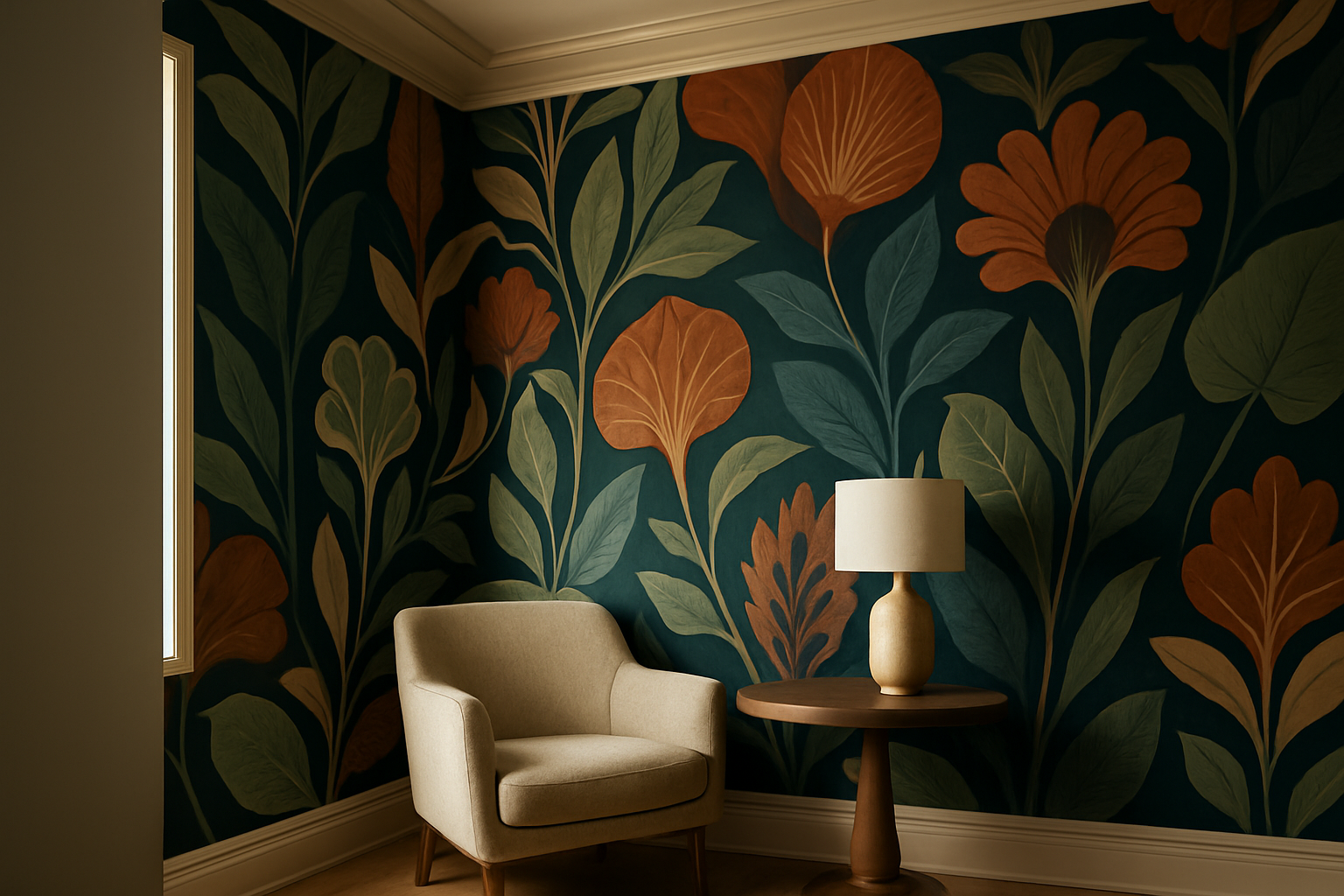Biomorphic Wallpaper: Nature-Inspired Patterns for Serene Interiors
In the ever-evolving world of interior design, a fascinating trend is emerging that marries the organic beauty of nature with cutting-edge technology: biomorphic wallpaper. This innovative approach to wall coverings is transforming homes into tranquil sanctuaries, bringing the calming essence of the outdoors inside. As homeowners seek to create spaces that nurture well-being and connectivity with nature, biomorphic patterns are becoming the go-to choice for those looking to infuse their living areas with a sense of harmony and vitality.

The Origins of Biomorphic Design
Biomorphic design, the foundation of this wallpaper trend, has its roots in the early 20th century. Artists and designers began to draw inspiration from natural forms, moving away from rigid geometric shapes towards more organic, fluid lines. This shift was partly influenced by advancements in microscopy, which revealed the intricate patterns and structures found in nature at a cellular level.
The term biomorphic, coined in the 1930s, literally means life-shaped. It encapsulates designs that emulate the flowing, asymmetrical forms found in living organisms. In architecture and interior design, this translated into curved furniture, undulating walls, and nature-inspired decorative elements. As technology advanced, these principles found new expression in digital design and printing, paving the way for the sophisticated biomorphic wallpapers we see today.
The Science Behind Biomorphic Patterns
The appeal of biomorphic wallpaper goes beyond mere aesthetics. Research in environmental psychology suggests that exposure to nature-inspired patterns can have significant positive effects on human well-being. This concept, known as biophilic design, posits that humans have an innate connection to nature, and incorporating natural elements into our built environments can reduce stress, improve cognitive function, and enhance overall mood.
Biomorphic patterns tap into this by replicating the fractal geometry commonly found in nature. Fractals, patterns that repeat at different scales, are abundant in natural elements like tree branches, river systems, and leaf veins. Our brains are wired to process these patterns efficiently, finding them visually pleasing and calming. By bringing these forms into our homes through wallpaper, we create spaces that are not just visually striking but also psychologically comforting.
Technological Advancements in Wallpaper Production
The rise of biomorphic wallpaper has been facilitated by significant advancements in digital printing technology. High-resolution printing techniques now allow for the creation of incredibly detailed and nuanced patterns that were previously impossible to achieve. These printers can replicate the subtle gradients and complex textures found in nature with remarkable accuracy.
Moreover, developments in eco-friendly inks and sustainable materials have made it possible to produce these wallpapers with minimal environmental impact. Water-based inks and recycled or responsibly sourced papers are becoming increasingly common, aligning the production process with the nature-inspired ethos of the designs themselves.
Some manufacturers are even experimenting with interactive wallpapers that change appearance based on factors like temperature or touch, adding an extra dimension to the biomorphic experience. These innovations are pushing the boundaries of what’s possible in interior design, creating dynamic living spaces that respond to their environment.
Incorporating Biomorphic Wallpaper in Home Design
The versatility of biomorphic wallpaper makes it suitable for a wide range of interior styles and spaces. In minimalist interiors, a subtle biomorphic pattern can add depth and interest without overwhelming the space. For more eclectic or maximalist designs, bold, large-scale patterns can serve as striking focal points.
When incorporating biomorphic wallpaper, consider the scale of the pattern in relation to the room size. Larger rooms can handle more expansive designs, while smaller spaces might benefit from more delicate, fine-grained patterns. The color palette is also crucial – earthy tones can enhance the natural feel, while bolder hues can create a more dramatic, artistic statement.
Biomorphic wallpapers work particularly well in spaces designed for relaxation or contemplation. Bedrooms, meditation rooms, and home offices can all benefit from the calming influence of nature-inspired patterns. In bathrooms, patterns reminiscent of water or aquatic life can create a spa-like atmosphere.
The Future of Biomorphic Design in Interiors
As our lives become increasingly digital and urbanized, the desire to reconnect with nature is likely to grow stronger. Biomorphic wallpaper represents just one facet of a broader trend towards biophilic design in our homes and workplaces. We can expect to see this aesthetic evolve and expand, potentially incorporating elements like sound and scent to create even more immersive, nature-inspired environments.
The intersection of biomorphic design with emerging technologies like augmented reality could lead to even more dynamic and interactive wall coverings. Imagine wallpapers that change with the seasons or respond to the inhabitant’s moods and activities. As our understanding of the psychological impacts of our surroundings deepens, biomorphic design principles may become integral to creating spaces that actively promote well-being and harmony.
In conclusion, biomorphic wallpaper represents a fascinating convergence of art, nature, technology, and psychology. It offers a way to bring the organic beauty and calming influence of the natural world into our daily lives, creating interiors that are not just visually appealing but also conducive to our mental and emotional well-being. As we continue to seek balance in our increasingly digital world, this trend stands as a testament to the enduring power of nature to inspire and nurture us, even within the confines of our built environments.





